Dinner time can be both exciting and overwhelming. People often wonder what to prepare and how to choose the right ingredients while considering various tastes and preferences. Knowing food and drink vocabulary is essential for making informed decisions in the kitchen and dining table.

What’s for Dinner
From selecting the freshest produce to understanding different cooking techniques, grasping culinary terms can enhance one’s cooking experience. Additionally, exploring international cuisines allows for more creativity and diversity in meal planning. This vocabulary not only prepares one for cooking but also fosters an appreciation for different dining traditions and etiquette.
Readers will gain valuable insights into food and drink vocabulary through this article, making dinner planning much simpler and more enjoyable. Familiarity with the terms will empower anyone to make delightful choices for their next meal.
Key Takeaways
- Understanding food vocabulary simplifies meal planning.
- Knowledge of cooking techniques enhances overall dining experiences.
- Exploring international cuisines enriches culinary creativity.
Exploring the Basics

Understanding food and drink vocabulary starts with recognizing meal categories and essential food groups. These categories help in identifying the types of foods commonly consumed and their nutritional role.
Common Meal Categories
Meals are typically divided into several categories.
- Breakfast: This meal often includes foods like eggs, toast, and cereal.
- Lunch: It usually consists of sandwiches, salads, or pasta.
- Dinner: Dinner can feature anything from meat and vegetables to soups and stews.
- Snacks: This category includes light bites like fruit, chips, or nuts.
Each meal plays a role in nutrition and energy levels throughout the day. Understanding the common components of these meals can aid in making better food choices.
Essential Food Groups
Five main food groups are crucial for a balanced diet:
- Fruits: Rich in vitamins and fibre, fruits often serve as snacks or meal components. Examples include apples, bananas, and berries.
- Vegetables: Like fruits, vegetables are high in nutrients. Common choices include spinach, carrots, and broccoli.
- Grains: This group mainly includes bread and rice, which provide essential carbohydrates for energy.
- Proteins: Foods such as meat, beans, and nuts fall into this group, providing necessary building blocks for the body.
- Dairy: Milk, cheese, and yoghurt offer calcium and vitamin D for strong bones and teeth.
Identifying these food groups assists in creating balanced meals that support health.
Cooking Techniques
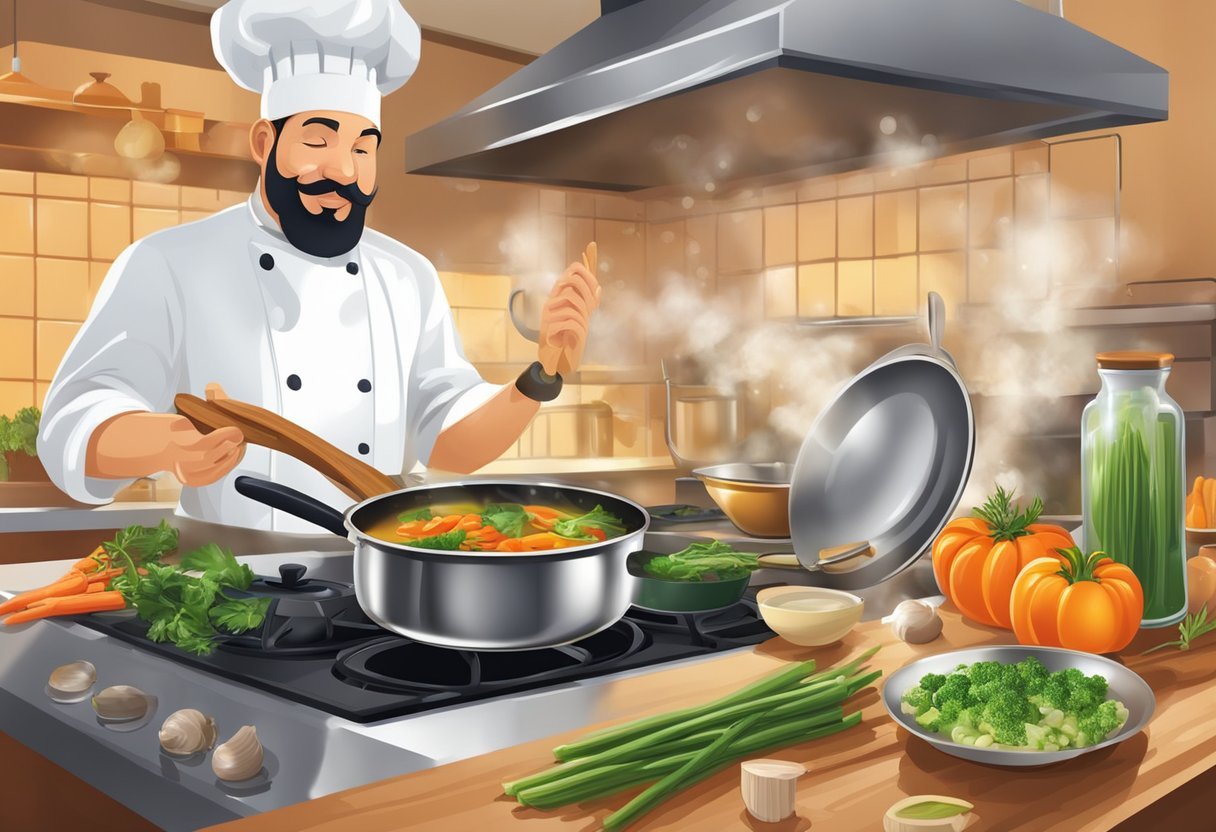
Cooking techniques are essential skills for any home cook. They define how heat is applied to food and have a great impact on flavor, texture, and nutritional value.
Dry Heat Cooking Methods
Dry heat cooking methods rely on hot air or direct heat to cook food. These techniques include baking, roasting, grilling, and sautéing.
- Baking: This method uses convection heat in an oven. It’s great for bread, pastries, and casseroles.
- Roasting: Often used for meats and vegetables, roasting involves cooking food in an oven with dry heat, promoting caramelization.
- Grilling: This technique cooks food over an open flame, giving it a distinct smoky flavour and appealing grill marks.
- Sautéing: This method uses a small amount of fat in a hot pan. It cooks food quickly at high temperatures, ideal for vegetables and meats.
Each dry heat method brings out different flavours and textures in food, making them versatile choices for many recipes.
Moist Heat Cooking Methods
Moist heat cooking methods use water or steam to cook food. These techniques include boiling, steaming, braising, and poaching.
- Boiling: This involves cooking food in water at high temperatures. It’s commonly used for pasta and vegetables.
- Steaming: This gentle method allows food to cook in steam, preserving nutrients and flavour. It is perfect for vegetables and seafood.
- Braising: Braising combines both moist and dry heat. Food is first browned, then cooked slowly in liquid. It’s excellent for tougher cuts of meat.
- Poaching: Poaching cooks food gently in simmering liquid. It is often used for eggs, fish, and delicate fruits, allowing for subtle flavours.
These methods are ideal for foods that benefit from gradual cooking and moisture retention.
Combination Cooking Methods
Combination cooking methods blend both dry and moist techniques. This category includes methods like stewing and pressure cooking.
- Stewing: In this method, food is cut into small pieces and simmered in liquid. The cooking time is longer, creating rich flavours and tender textures.
- Pressure Cooking: This method cooks food quickly under high pressure, which raises the boiling point of water. It’s fast and enhances flavours while retaining moisture.
Combination methods are useful for a variety of dishes, especially for achieving depth of flavour and tenderness in meats and vegetables.
International Cuisine
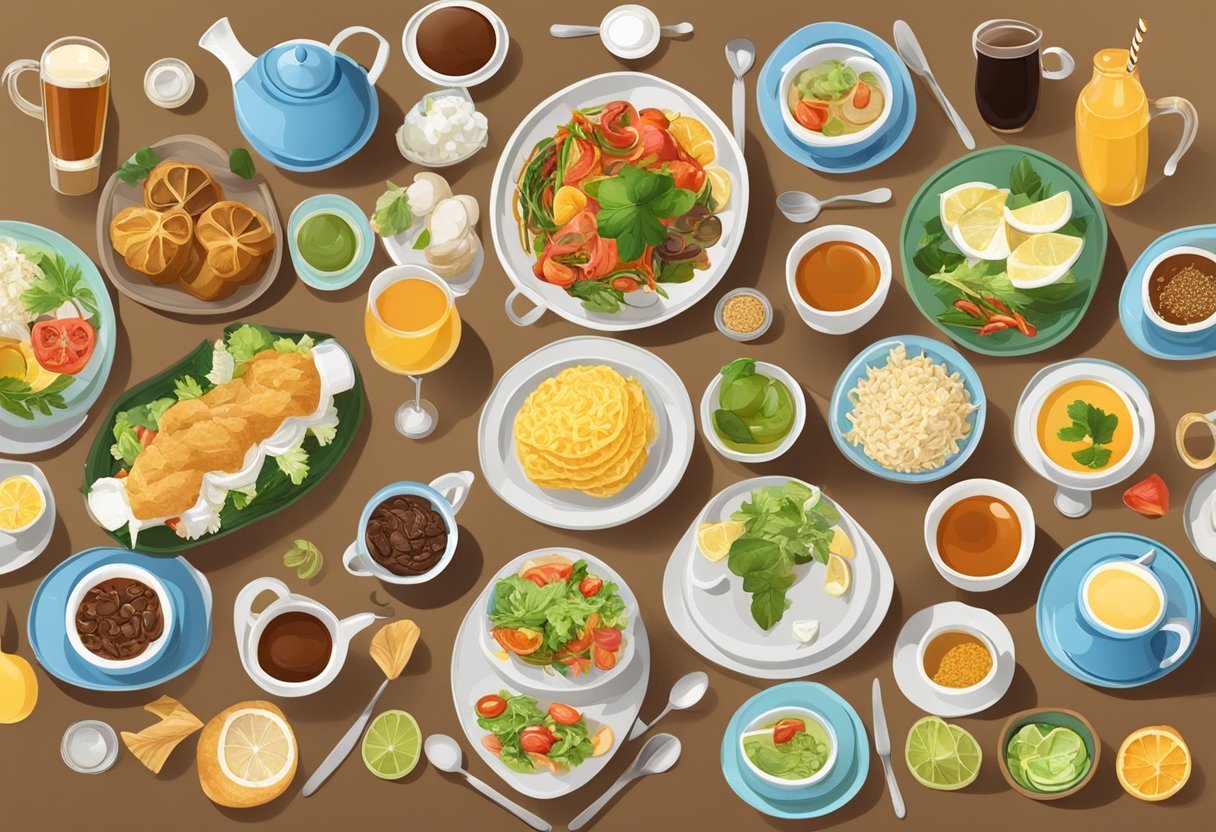
Cuisine varies greatly around the world, showcasing different traditions and flavours. Each region brings its unique ingredients and cooking methods that contribute to a diverse culinary landscape.
European Delicacies
European cuisine is known for its variety and richness. Countries like Italy and France are famous for their distinct flavours.
- Italian Cuisine: This includes pasta dishes like spaghetti alla carbonara and lasagna, accompanied by rich sauces.
- French Cuisine: Dishes like coq au vin and ratatouille highlight fresh vegetables and herbs.
Many European countries also excel in baking, with items like croissants and bakery bread.
The use of herbs, olive oil, and dairy also plays a significant role in flavouring dishes.
Asian Flavor Profiles
Asian cuisine features bold and vibrant flavours, often using spices and fresh ingredients.
Chinese Cuisine: Known for its stir-fry dishes, such as Kung Pao chicken and dumplings, Chinese food includes rice or noodles in most meals.
Indian Cuisine: Rich in spices, Indian food includes dishes like butter chicken and palak paneer as well as a variety of lentil-based curries.
Japanese Cuisine: This cuisine focuses on freshness and presentation, with staples like sushi, tempura, and ramen.
Each country offers unique dishes that reflect local customs and traditions.
African Culinary Traditions
African cuisine varies widely by region, from north to south and east to west.
North African Cuisine: Known for dishes like couscous and tagines, it features spices such as cumin and coriander.
West African Cuisine: This region is marked by its use of ingredients like yams and plantains, with popular dishes including jollof rice and fufu.
East African Cuisine: Includes meals like injera, a sourdough flatbread, often served with lentil stew.
Spices and cooking techniques vary, creating unique flavour profiles across the continent.
North American Staples
North American cuisine reflects a blend of cultures, producing a variety of staple dishes.
United States: Fast food culture is strong here, with items like burgers and hot dogs. Comfort foods include macaroni and cheese and fried chicken.
Mexican Cuisine: Featuring dishes like tacos and enchiladas, it uses ingredients like beans, corn, and avocados.
Canadian Cuisine: Notable for its use of maple syrup, Canadians enjoy dishes like poutine and hearty stews.
These dishes showcase a mix of indigenous ingredients and immigrant influences.
South American Signature Dishes
South American cuisine is vibrant and diverse, with each country offering unique flavours.
Brazilian Cuisine: Known for feijoada, a black bean stew with pork, as well as pão de queijo, cheese bread.
Argentinian Cuisine: Famous for its beef, dishes like asado feature grilled meats, often enjoyed with chimichurri sauce.
Peruvian Cuisine: Combines indigenous and colonial influences, with dishes like ceviche and lomo saltado, featuring fresh fish and marinated meats.
The use of herbs, spices, and cooking methods varies greatly, forming a rich tapestry of flavours.
Dining Etiquette
Dining etiquette varies widely between cultures, affecting how meals are enjoyed. Understanding these customs can enhance the dining experience and show respect for others at the table.
Western Dining Manners
In Western dining, certain rules stand out. Guests should wait for the host to begin the meal before they start eating. It is polite to keep hands visible but not on the table while eating. Utensils are typically used in the order they are placed; the outermost pieces are for the first course.
Key Rules:
- Cut food: Only cut one bite at a time.
- Bread handling: Break off small pieces instead of biting directly from the roll.
- Soup: Spoon away from the body to minimize spills.
Elbows should stay off the table, and chewing with a closed mouth is expected. Once finished, placing utensils side by side signals that the meal is complete.
Eastern Table Customs
Eastern dining customs often emphasize the communal aspect of meals. It is common for dishes to be shared among everyone at the table, using chopsticks or serving spoons. Guests should wait for the eldest person to start before eating.
Key Points:
- Chopsticks: Hold them properly and avoid sticking them upright in rice.
- Serving: Always offer food to others before serving oneself.
- Respect: Showing gratitude for the meal is essential, often by saying phrases like “Thank you for the food.”
Guests should maintain a sense of harmony at the table, and discussing food is encouraged. Understanding these customs creates a respectful atmosphere during meals.
Beverage Complementarity
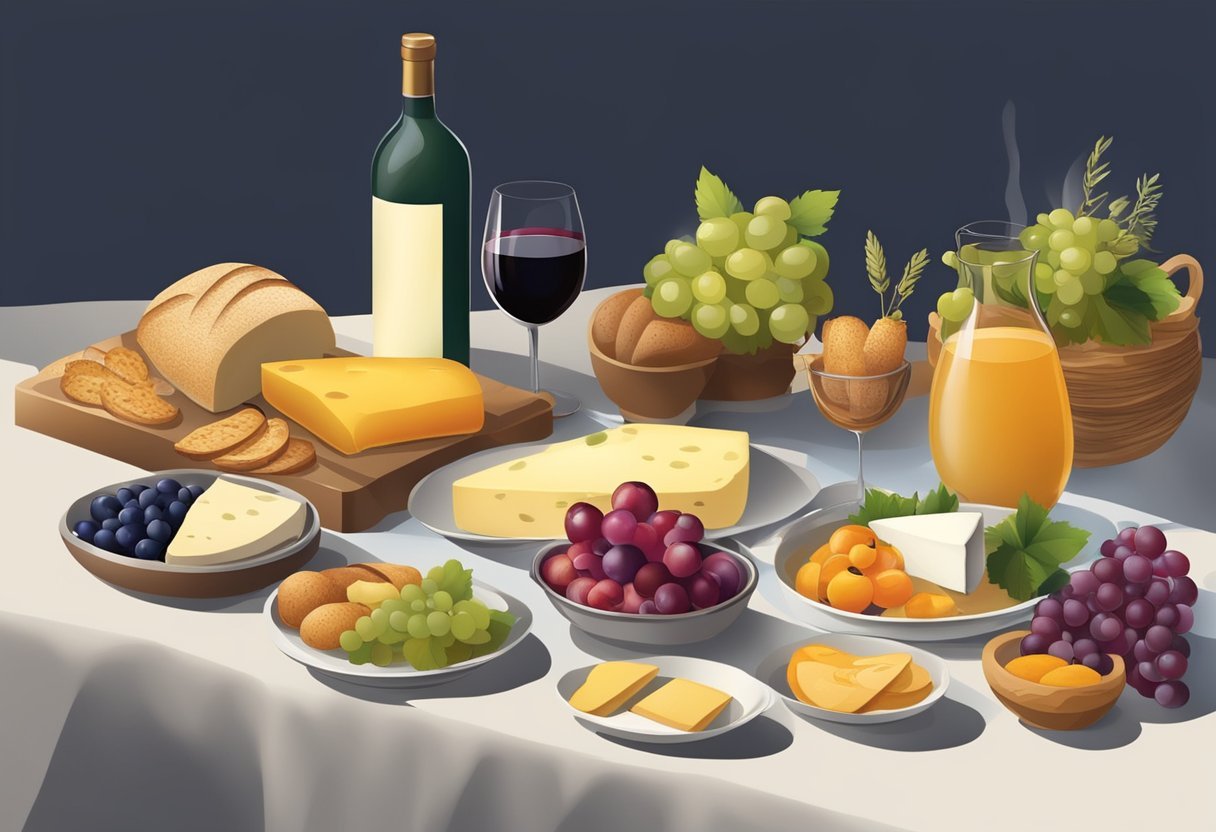
Choosing the right beverage is essential for enhancing the dining experience. Different drinks can elevate flavours and make meals more enjoyable. This section will explore how to pair wines with meals and select drinks for spicy foods.
Pairing Wine with Meals
Wine can enhance the flavours of many dishes. Certain types of wine work better with specific meals. For example:
- Red Wine: Pairs well with red meats like beef or lamb. A bold Cabernet Sauvignon complements grilled steaks.
- White Wine: Works best with lighter proteins such as chicken or fish. A Chardonnay is great with creamy dishes.
- Sparkling Wine: This option is versatile. It can complement a wide range of foods, especially fried dishes.
When selecting a wine, consider the dish’s main flavours. A dish with strong spices may require a more robust wine to balance the taste.
Selecting Beverages for Spicy Foods
Spicy foods can be challenging to pair with drinks. The wrong choice may intensify heat or clash with flavours. Here are suitable options:
- Sweet Beverages: Drinks like sweet tea or lemonade can balance spicy flavours. The sweetness helps to cool down the heat.
- Acidic Drinks: Beverages such as soda or lime-based drinks provide a refreshing contrast. These can cut through rich, spicy flavours.
- Non-Alcoholic Options: Citrus mocktails are a great choice. They pair nicely with spicy dishes, enhancing the overall experience.
Selecting the right beverage can make spicy meals more enjoyable and satisfying.
Dietary Considerations
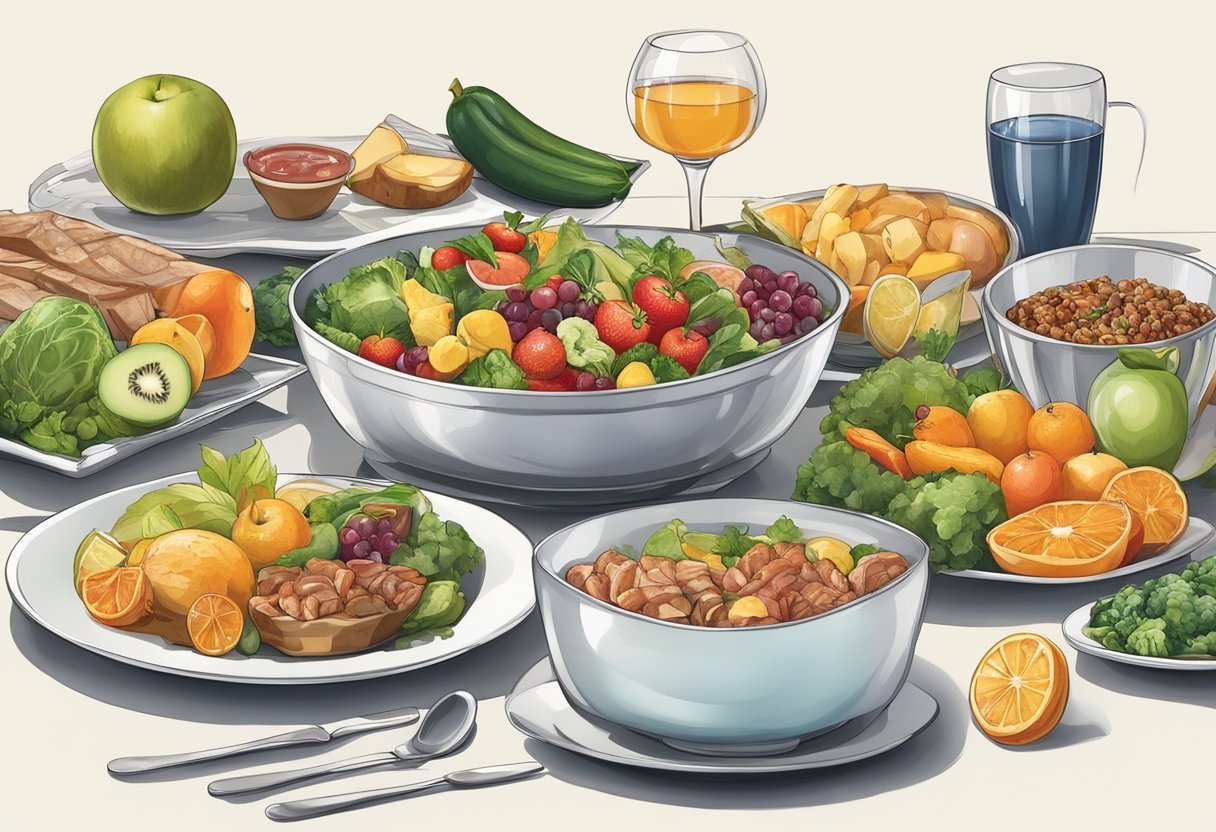
When planning meals, it’s crucial to consider various dietary needs. This section covers options for vegetarian and vegan diets, guidance for gluten-free choices, and awareness of food allergies. Each group has specific requirements that can affect meal options and enjoyment.
Vegetarian and Vegan Options
Vegetarians avoid meat, while vegans exclude all animal products, including dairy and eggs. A balanced meal for them should include plant-based proteins, such as beans, lentils, tofu, and tempeh. Whole grains like quinoa, brown rice, and oats are also essential for providing energy.
Fruits and vegetables are vital, as they offer necessary vitamins and minerals. Popular dishes include:
- Vegetable stir-fries: Quick and customizable.
- Chickpea salads: High in protein and fibre.
- Vegan tacos: Made with lentils or jackfruit.
Many restaurants now offer meatless options, making it easier to accommodate these diets. Checking labels can help ensure products are truly vegan.
Gluten-Free Guidance
Gluten is a protein found in wheat, barley, and rye. For those with celiac disease or gluten intolerance, avoiding gluten is necessary to prevent health issues. Gluten-free grains include rice, corn, quinoa, and millet.
Families can enjoy gluten-free pasta or bread made from alternative flour, like almond or coconut flour. Cooking at home allows better control of ingredients.
Helpful tips for gluten-free eating:
- Read labels: Look for hidden sources of gluten.
- Choose whole foods: Fruits, vegetables, and lean proteins are usually safe.
- Be cautious with sauces: Many contain gluten as a thickener.
With increased awareness, many restaurants and stores now offer gluten-free products.
Allergy-Aware Choices
Food allergies can be serious, so awareness is key when planning meals. Common allergens include peanuts, tree nuts, dairy, eggs, soy, wheat, fish, and shellfish. Always check for the presence of these ingredients in packaged foods.
Diners should communicate their allergies clearly when eating out. Many establishments are becoming more allergy-conscious and may have separate menus.
Helpful strategies to consider:
- Substitutions: Use alternative ingredients, such as almond milk instead of cow’s milk.
- Safe snacks: Choose allergy-friendly brands available in stores.
- Homemade meals: Preparing food at home reduces the risk of allergens.
Education and communication are essential for enjoyable dining experiences while avoiding allergens.
Recipe Development
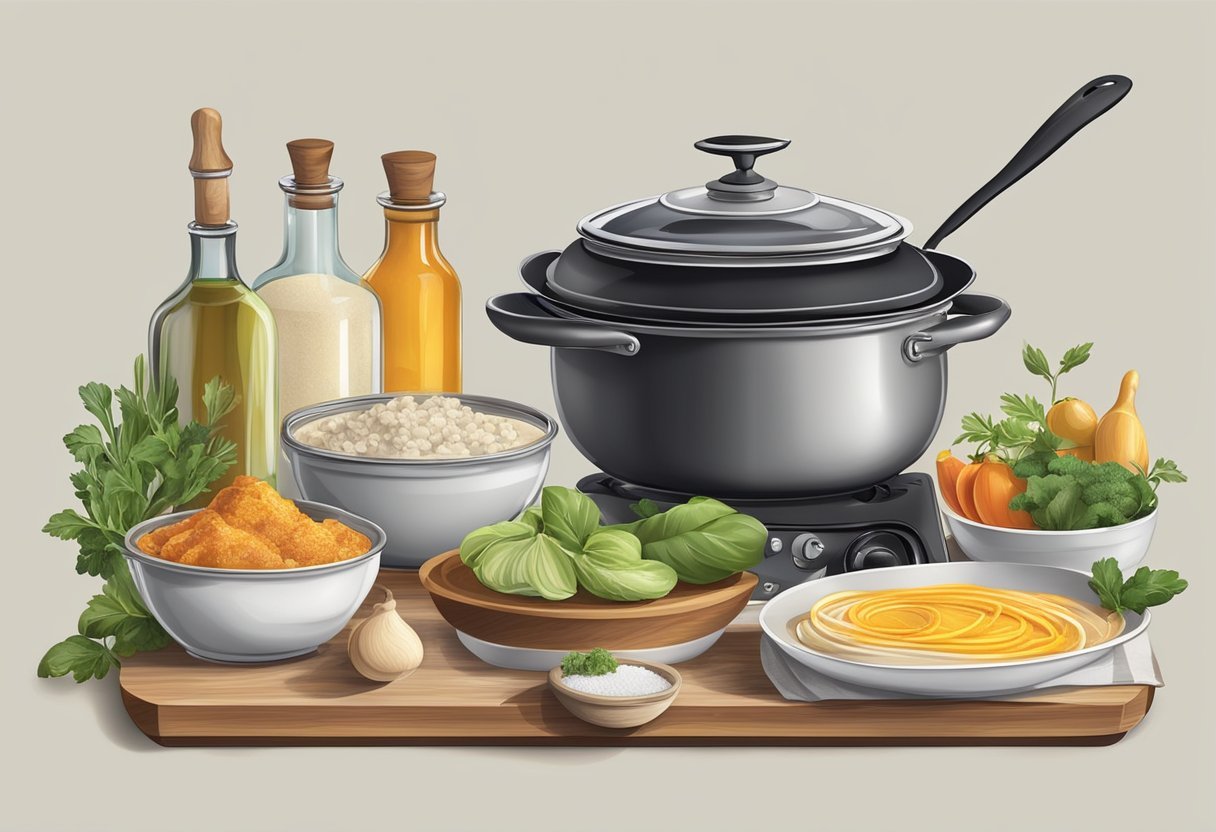
Recipe development is an important process in the culinary world. It involves creativity, precision, and a strong understanding of flavours and techniques. Two key aspects of recipe development include innovating traditional recipes and balancing flavours and textures.
Innovating Traditional Recipes
Innovating traditional recipes requires a blend of respect for the past and a creative approach to change. Chefs often start with classic dishes and then modify them to create something new. This can involve swapping ingredients, altering cooking methods, or adding modern twists.
For example, a chef might take a traditional lasagna and use zucchini strips instead of pasta for a lighter version. Another option could be to introduce new spices, giving a familiar recipe an unexpected kick.
This practice not only embraces heritage but also makes recipes more relevant to current tastes and dietary needs. By experimenting with these innovations, chefs can breathe new life into beloved dishes.
Balancing Flavors and Textures
Balancing flavours and textures is essential in recipe development. Successful dishes typically feature a variety of flavours, like sweet, salty, sour, and umami. Chefs must carefully measure these tastes to create harmony.
In addition to flavour balance, textures play a critical role. A dish with smooth, creamy elements can be enhanced with crunchy toppings. For instance, a creamy risotto topped with crispy shallots combines richness with texture, making each bite interesting.
Chefs often conduct taste tests and gather feedback to achieve the perfect balance. This step helps refine the recipe, ensuring that each component complements the others effectively.
Presentation and Garnishing
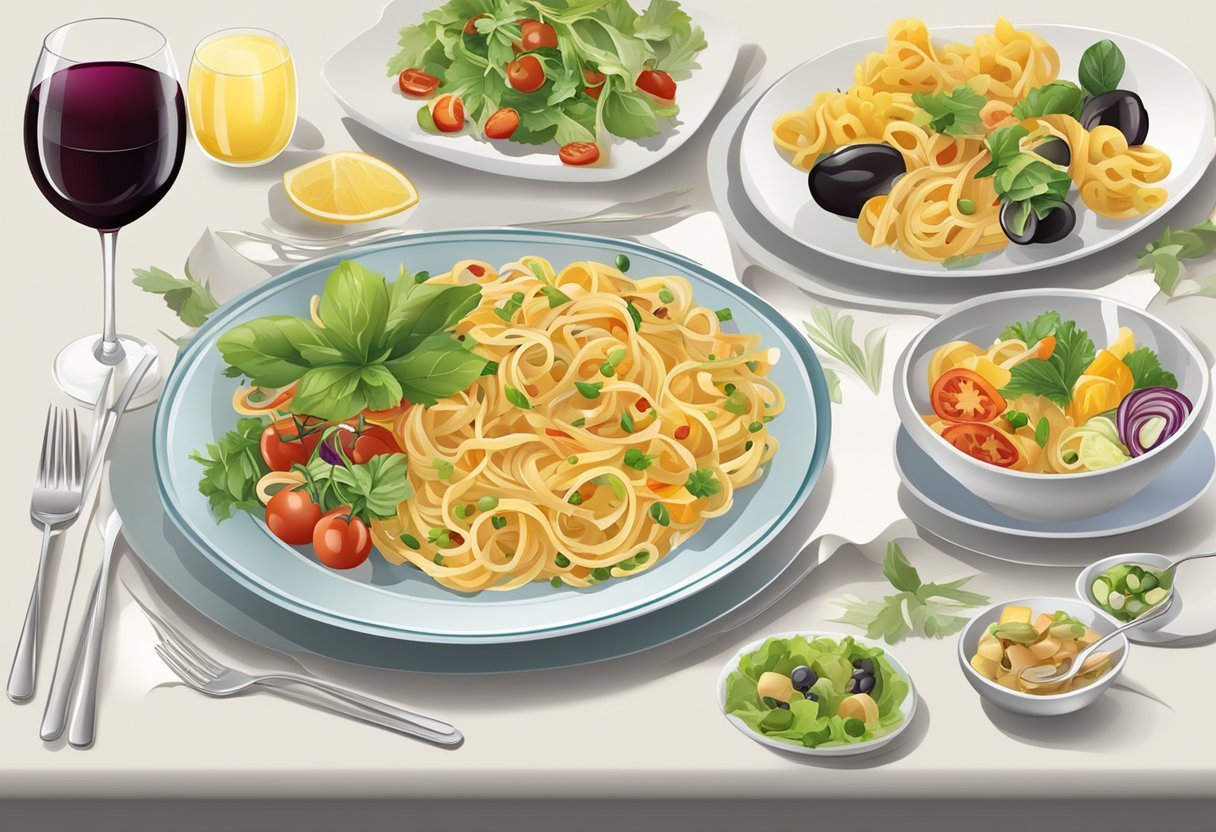
Food presentation is an important aspect of meal preparation. It enhances the dining experience and can make a simple dish look gourmet.
Key Tips for Effective Presentation:
- Plate Selection: Use larger plates to allow space for creativity. A larger surface can prevent crowding.
- White Space: Leave space on the plate to emphasize the food. This technique helps the dish stand out.
Garnishing Techniques:
- Use of Odd Numbers: Plating items in odd numbers can create a more appealing look. For instance, three pieces of sushi are visually better than four.
- Colour Contrast: Adding colourful garnishes like herbs or edible flowers can make a plate pop.
- Height Variation: Stacking ingredients or using moulds adds height. This creates an eye-catching presentation.
Common Garnishes:
- Fresh herbs (basil, cilantro)
- Edible flowers (nasturtiums, pansies)
- Citrus zest (lemon, lime)
- Sauces (drizzled artfully)
Incorporating artful plating and clever garnishing can transform everyday meals into memorable dining experiences. Using a mixture of textures and colours creates a more inviting presentation, making it not just about taste, but also about visual appeal.
Read More About – Hello How Are You? Basic Greetings in English







Leave a Comment